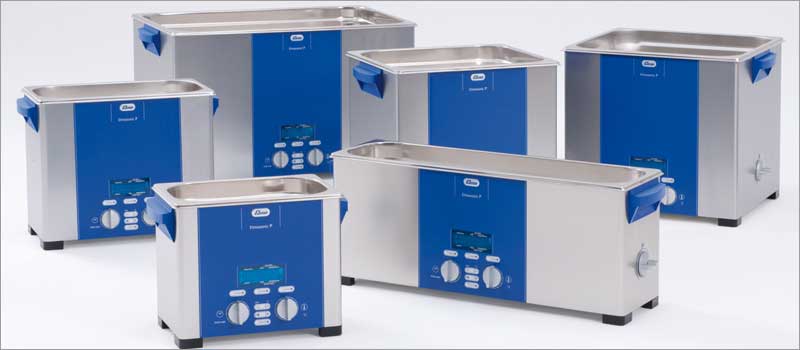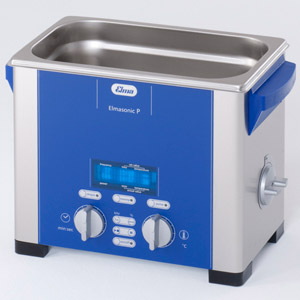
Ultrasonic Cleaner Machine: 10 Top Tips for Selecting the Best
An ultrasonic cleaner machine is often first choice for cleaning or processing operations across a broad spectrum of industry. This is borne out by a comprehensive marketsandmarkets report predicting that the market is “expected to grow from USD 1.6 billion in 2019 to USD 2.2 billion by 2024, at a CAGR of 6.5% during the forecast period.”
Why is this?
Ultrasonic cleaner machines are unsurpassed when it comes to removing contaminants from virtually any hard surface that can be safely immersed in a cleaning solution.
They are also widely used in the pharmaceutical and other processing industries as sonicator baths because of their ability to disperse, mix and dissolve samples.
The challenge is specifying your ultrasonic cleaner; its accessories, cleaning solution formulations, and cleaning procedures to accomplish tasks in the most efficient manner.
Which is the purpose of this post. But before digging into the 10 things you should know, a brief tutorial.
How does an Ultrasonic Cleaner Machine Work?
Ultrasonic cleaning machines are fitted with transducers attached to the bottom of a stainless-steel tank filled with the cleaning solution.
These transducers, powered by a generator, create vibrations at high frequencies measured in thousands of cycles per second (kHz) and send sound waves through the cleaning solution.
The waves produce millions of tiny vacuum-filled bubbles that shoot out a powerful jet of liquid when they implode.
The force of the implosions, called cavitation action, lifts off and carries away contaminants on objects being cleaned. The process is tough enough for carburetors but gentle enough for electronics and surgical instruments. Now to our subject.
Ultrasonic Cleaner Machine Tip 1. Task
What are you trying to accomplish?
While we use the term ultrasonic cleaner machine these devices do a lot more than clean parts, be they engine components, injection molds or surgical implants. As briefly noted above, they are also used to degas solvents, disperse nanoparticles, and emulsify, dissolve, disperse and otherwise prepare lab samples.
If you are cleaning parts, to get started you need to consider the following before making a selection:
Once you define exactly what you’re trying to accomplish the following points will help narrow down your equipment selection.
Tip 2. Size
How large are the parts you’ll be cleaning?
Measure the dimensions of largest parts to be cleaned and make sure to select a tank that will accommodate these parts. In addition, pay attention to the internal dimensions of the parts basket, since this is most likely where you will put the parts during cleaning. We’ll discuss the importance of the basket in the next section.
You’ll also need to know the working depth which is the distance from the inside bottom surface of the basket to the surface of the liquid in a filled tank. It’s important because parts being cleaned must be fully immersed in the liquid. If working depth info is not provided ask the manufacturer.
Tip 3. Baskets
Baskets are used to support parts in an ultrasonic cleaner and to hold sample containers when used as sonicator baths.
In terms of tank life, keep in mind that the bottom of the tank is a vibrating membrane. Any solid item, particularly a metal part, can act as a drill while the ultrasound is operating. Over time this can wear a hole in the tank. That’s a good enough reason to use baskets.
There are a variety of basket configurations including those with fine screens for small parts.
Tip 4. Frequency
Most ultrasonic cleaner machines operate between 35 and 45 kHz. This frequency range is well suited to the vast majority of cleaning tasks.
A lower frequency such as 25 kHz produces larger cavitation bubbles. When these bubbles implode, they release a larger amount of cleaning energy. For coarse cleaning such as removal of lapping abrasives or polishing paste, a lower frequency will be more effective.
A higher frequency produces smaller cavitation bubbles. These cover fine-featured complex surfaces more thoroughly and are gentler than low frequencies.
For fine cleaning of very delicate jewelry, electronics, and soft metals with polished surfaces consider a unit operating at 80 – 130 kHz. If you are cleaning capillary tubes or spectrophotometer cuvettes you will need a unit that operates at 80 kHz or higher.
If you are cleaning a variety of materials, consider a dual-frequency ultrasonic cleaner. An ultrasonic benchtop example is the Elmasonic P unit operating at 37 and 80 kHz. For commercial applications, the industrial floor-mounted ultrasonic cleaner Elma X-tra ST units can be set to 25 kHz for basic cleaning and to 45 kHz for fine cleaning. Other models operate at 35/130 kHz.
Tip 5. Heaters
Most cleaning operations are much more effective with heating. Heated cleaning solutions work best for removing oils, machining coolants and a whole host of other contaminants.
In this case use an ultrasonic cleaner machine with thermostat-controlled heaters. Examples linked above as well as others can be adjusted in increments to 80⁰C, above which cavitation is inhibited and cleaning efficiency levels off.
On the other hand, if you are removing blood, don’t use heat at all.
Tip 6. The Sweep Mode
“Sweep” is a small continuous variation of the ultrasonic frequency around a central value, such as 40 kHz ±3 kHz.
If an ultrasonic cleaner operates at a fixed frequency (called “Normal”) there are three potential problems: ‘hot spots’, ‘dead zones’, and harmonic vibrations.
Hot spots are areas with a high concentration of cavitation bubbles, i.e. a stronger ultrasonic effect. This can cause etching on delicate parts with fine features, on polished surfaces, on soft metals, or on thin metal layers.
Dead zones are areas where there is no cavitation, i.e. no cleaning.
Harmonic vibration can develop when the fixed ultrasonic frequency causes parts to resonate, which is potentially damaging to sensitive components such as fine wires or crystals typical of electronics and printed circuit boards.
Normal can be used for a sonicator bath.
Tip 7. Degas and Pulse
Ultrasonic cleaner models may offer either or both Degas and Pulse – or neither.
When filling your tank with fresh cleaning solution you must degas the solution to remove trapped air that inhibits cavitation. A Degas mode will enable you start cleaning sooner after you fill the tank.
Pulse mode provides intermittent spikes of very high ultrasonic power to remove stubborn contaminants. Pulse mode also degasses solutions very effectively.
If you are degassing solvents select a model that has either a Degas mode or a Pulse mode. An ultrasonic cleaner without these modes will also degas your solution, but at a slower rate. Tip 8. Ultrasonic Power
This is a complex topic that we’ll try to simplify.
When an ultrasonic cleaner is running electrical power is consumed evenly but it is released in intervals to create sound waves.
The larger the volume of solution, the more ultrasonic power will be needed for cleaning. Most cleaners run at an average power of 50 to 100 watts per gallon, so the larger the tank the more power you need.
While more power usually indicates faster and more effective cleaning, more power is not always better. Too much power can damage electronic parts, the surface finish on a soft metal (e.g. aluminum), and other delicate items. For cleaning extremely sensitive items, ultrasonic cleaners with adjustable power is a useful feature. Examples are the P series.
Tip 9. Ultrasonic Cleaner Machine Accessories
A variety of accessories are available to support the use of ultrasonic cleaners.
Mentioned earlier are baskets that may be offered as standard or ordered separately. Other useful accessories include
Please check our ultrasonic accessories blog post and ask our scientists for recommendations on other accessories that add efficiency to your cleaning and sample prep operations.
Tip 10. Ultrasonic Cleaner Machine Chemicals
The correct cleaning solution chemistry is as important as ultrasonic frequency, power and other points covered in this post.
Most commonly used chemistries fall into three categories: alkaline, acidic and neutral. They are usually supplied as concentrates so a little goes a long way. Their non-toxic biodegradable chemistry eases disposal concerns. Here are brief examples of the three categories:
Alkaline elma tec clean A series is produced in several formulations to handle specialized or general-purpose cleaning.
Elma tec clean A4 is a universal cleaner/degreaser for all types of metals and most plastics. It’s a great choice for cleaning automotive parts such as carburetors.
Elma tec clean A1 is a free-rinsing formulation preferred for applications where the parts must be rinsed free of any chemical residue after cleaning. This includes cleaning optics and electronics, especially printed circuit boards.
Acidic ultrasonic cleaning concentrates such as elma tec clean S1 are used for removing corrosion, oxidation, minerals and rust.
Neutral elma tec clean N1 is a phosphate-free emulsifying cleaning concentrate for gentle cleaning action. It is used for the treatment of highly sensitive pieces.
More information is found on our cleaning solution blog post. Please contact the ultrasonic cleaning professionals at Tovatech for advice on equipment and cleaning solution selection based on your operations and requirements.

